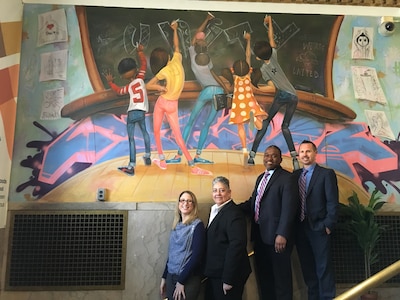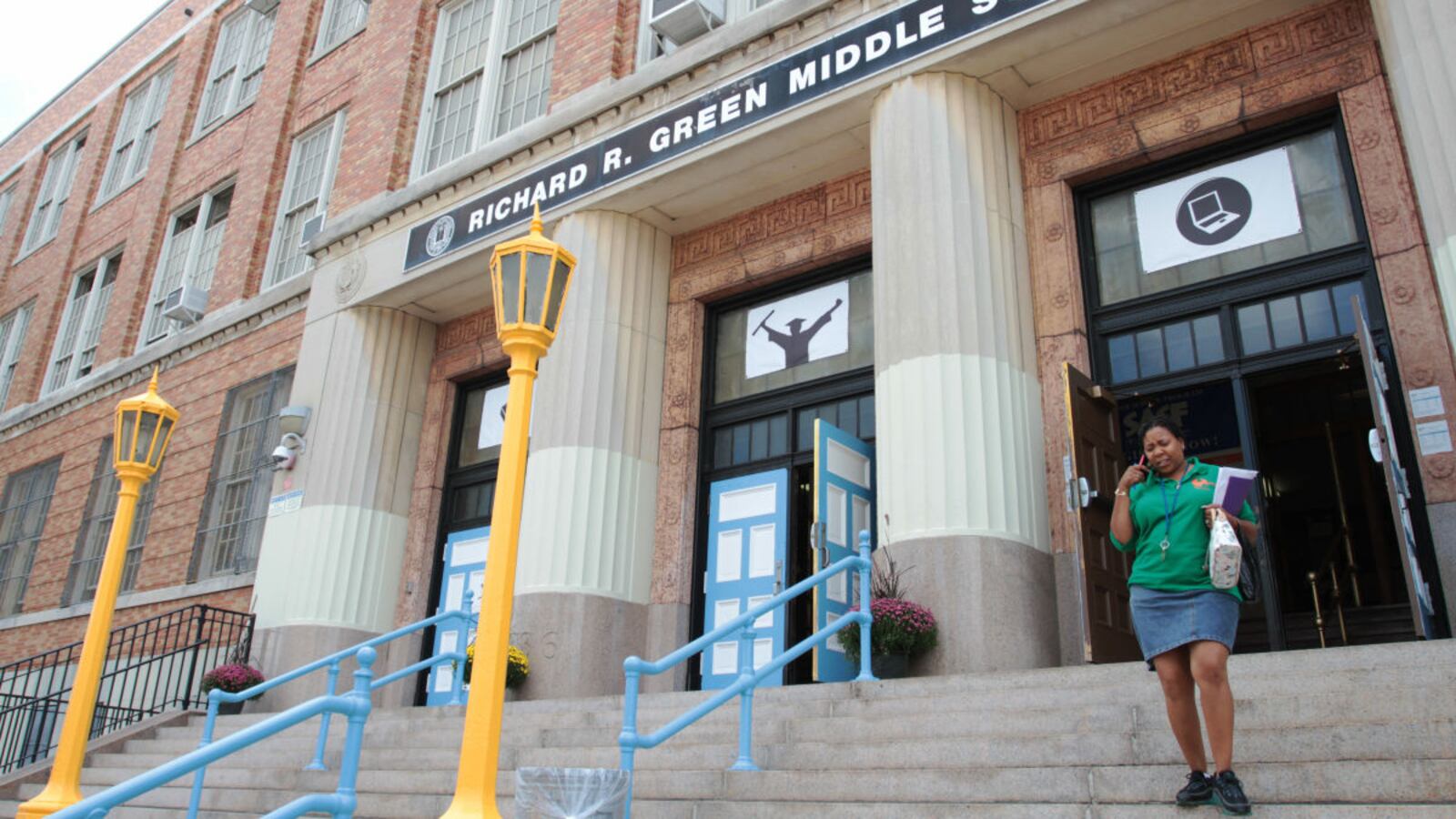In a building that houses four struggling middle schools, it might seem strange to add another one.
Yet that’s essentially what is happening at one Bronx campus, which will gain the Leaders of Tomorrow school next fall. But that middle school will actually be the product of two existing schools — the newest twist on the de Blasio administration’s tactic of merging schools, and one that New York City officials say may become a model.
Schools Chancellor Carmen Fariña has already announced 12 plans to merge schools next year, mostly schools that are too small to sustain themselves or are struggling academically. In most cases, one school’s students and the bulk of its staffers will simply be incorporated into the other.
At the Richard R. Green campus, the Globe School for Environmental Research is officially being swallowed by the School of Diplomacy. But unlike in other mergers, the combined schools will launch a major rebranding effort that will change the school’s name and incorporate student, teacher and parent feedback in shaping everything from curriculum to school colors.
“I view it as a new school, and it was important to me that it wasn’t just my school taking over another school,” said Sean Licata, the principal of the School of Diplomacy who will head the combined school.
The campus that will house Leaders of Tomorrow faces big challenges. Both schools slated for consolidation have attendance rates that have hovered below 90 percent, and most students are not proficient in reading or math. Almost all of the students come from low-income families.
The building also battles a negative public image. The campus grabbed headlines after a high-profile stabbing nearby two years ago, and it is one of the few middle schools where students must pass through metal detectors to enter. The schools set to merge have seen their enrollments decline by half over the past five years, meaning that a consolidation without rebranding might not address low student demand.
“That’s definitely the big elephant in the room,” said Juanita Rodriguez, who directs the city’s school-turnaround program for District 11, which includes Richard R. Green. “It’s hard because you’re competing with other schools that didn’t have to rebrand themselves.”

To prepare for the consolidation, school officials helped organize a Saturday retreat hosted by the teachers union that gave roughly 40 staff members from both schools time to socialize and discuss what values they wanted the new school to embody. Another two-day workshop is set for June.
“When we had the school closures, the UFT would be outside rallying against them,” Licata said, noting this process is more collaborative. “These consolidations are all uncharted territory, and I think it’s a welcome departure.”
In addition, school leaders have surveyed parents, students, and teachers about everything from what the school’s main academic focus should be to what extracurricular activities should be created.
Education department spokeswoman Devora Kaye said each merger process involves a unique approach, but often includes input from parents and students. Officials said several other pairs of schools that are set to merge are considering name changes.
At Richard R. Green, the consolidated school will also have the benefit of additional resources through Mayor Bill de Blasio’s “Renewal” turnaround program, which is designed to turn schools into community hubs and providers of social services. Both of the to-be merged schools are part of the program.
Licata credited the school’s partnership with Phipps Neighborhoods for helping boost attendance, which has increased from 87 percent last school year to over 92 percent this year to date. And in addition to new mental health services and an extended school day that went into place this year, a health clinic is set to open in the building next summer, offering vaccinations, dental check-ups, and other services.
Licata said there hasn’t been a strong parent response to news of the merger, though similar plans have provoked anxiety in other communities. Within the school, Licata has started inviting teachers from the Globe School to participate in meetings with the School of Diplomacy, and sends his newsletter to teachers from both schools.
For some teachers, the transition may be more stressful. Staff members will not have to reapply for their jobs, but the consolidation will mean staffers in redundant positions will have to find positions at other schools, or join a pool of substitutes.
Marlon Williams, the fourth principal of the Globe School in four years, is one staff member who won’t be returning. Rodriguez said many teachers had lost faith in the administration amid the frequent turnover, and that Williams was aware the school could be merged when he was hired.
For his part, Williams said he hopes the consolidation will allow his teachers to become invested in their school in a way that had been impossible over the last several years thanks to the leadership churn.
“No one said, ‘What curriculum do you [want]?” Williams said. “No one said, ‘What schedule do you think would be most effective? What resources do you think we should use?’”
This isn’t the first time the Richard R. Green campus has seen a significant shake-up. Mayor Michael Bloomberg’s small-schools push broke the larger school into four middle schools in the first place. And the schools have already been on a rebranding spree since the start of the Renewal program, doing outreach to local elementary schools, and coating the walls and lampposts with bright, fresh paint.
Not everyone is convinced that the merger will have a significant effect.
Aaron Pallas, a sociology and education professor at Teachers College, said the process proceeding at Richard R. Green was a smart way to cherry-pick the best elements of each school without the anguish of closures, though he didn’t see it as a way to transform student outcomes.
“It’s possible that changing the name and developing a new mission can actually create a new sense of energy and excitement, but I think it’s pretty unlikely,” he said. Pallas also cautioned that mergers could potentially incite “cultural clashes,” though he acknowledged that is less likely in schools that are already sharing staff and other resources.
Rodriguez, for her part, would not rule out the possibility that further consolidations in the building could be necessary. But Williams, the outgoing Globe principal, thinks the merger will be enough to create equilibrium in the building.
“Somewhere between the small school and the huge schools of decades ago, there’s a better medium,” he said. “And as you merge, you get closer.”
Correction: A previous version of this story misstated the number of recent principals at the Globe School for Environmental Research. There have been four principals over the past four years, not four principals in two years.

